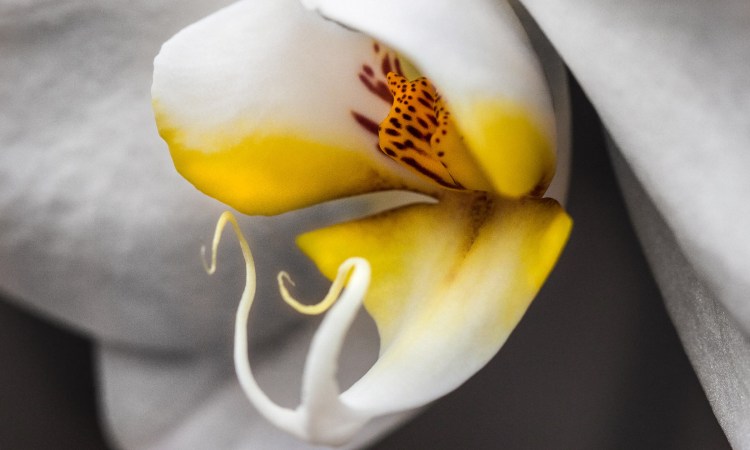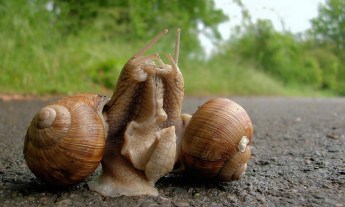
Why would a plant want an animal to have sex with it? Because, it turns out, plants can be horrifically manipulative and deceitful! Wild sex expert Carin Bondar explains.
Sexual deception is a biological bummer, at least for the deceived party. However, the animal kingdom has some of the most blatantly sexually deceitful beings on the planet. They engage in the ultimate in exploitation. I’m talking about sexually deceptive plants, and all the poor arthropod males who are wasting their reproductive efforts on entities that aren’t even animal.
The majority of examples of sexual deception come from members of the orchid family (Orchidacae), although examples from an iris and a daisy have recently been discovered, indicating that sexual deception is probably widespread over the entire planet. It has evolved independently on at least four continents, and its existence continues to perplex evolutionary biologists and botanists alike. An initial question springs to mind: why would a plant want an animal to have sex with it? Plants require animals (or other interventions) to cross-pollinate, and sexual deception is thought to have evolved from plants that offer food rewards to pollinating insects. Except, in this instance, instead of receiving a food gift, the duped male suitor receives absolutely nothing.
Most systems of sexual deceit are species-specific: a single insect species, for example, will pollinate a single orchid species. This is in direct contrast to the systems of food-gifting pollinators, which may have a wide variety of pollinating insects helping to spread their seeds. It would appear that having a single pollinator is more effective, since less pollen is lost or deposited on the wrong species.
So how do these plants so effectively entice the attention of would-be male suitors? The most definitive answer is in the chemistry. Over millions of years orchids have evolved countless chemicals that are exact replicas of reproductively active female arthropods (most generally members of the Hymenoptera, one of the largest insect orders containing bees and wasps). The accuracy of this chemical mimicry is astounding, and this is undoubtedly what draws the male’s attention at the outset, but an effective female disguise must continue the foolery even when the male is close enough for his vision to come into play.
We see the remarkable structures and colors on many orchid species, which run the gamut from simple yellow pigmentation (a wavelength that is most discernible within the visual spectrum of the hymenoptera) of the pollen, to bright yellow sepals and petals. The shape of the flower, as well as its UV reflectance and size are important factors for males of different hymenoptera. In one orchid species, the UV reflectance of bumps on its labellum (or inner structure) is a perfect match to the UV reflectance found on the wings of sexually receptive females. In extreme cases the labellum may have evolved to appear as an exact replica of the female in question, and in some species it has evolved to be a slightly larger version of a sexually receptive female in order to exploit the male’s natural preference for females with a larger body size.
Once a male pollinator has located his orchid lover, he will engage in a variety of behaviors, dependent on the species.
As if the deck wasn’t stacked enough against male hymenopterans, there are also several factors that render specific hymenopteran species particularly susceptible to deception. Solitary species (as opposed to colonial species) are liable to be sexually deceived because males have evolved mechanisms to be attracted to airborne sex chemicals from potential female partners. They engage in intense mate searching and tend to show fairly robust mating behaviors once females are located. While males are polygynous (meaning they will mate with lots of females), the females are obligately monandrous, i.e. the first sperm a female receives will sire the majority (or all) of her offspring. These ecological characteristics provide the perfect scenario for deceptive orchids: males who are easily drawn by chemicals, and try to fertilize as many virgin females as they possibly can. In addition, the majority of species subject to sexual deception are haplodiploid — which means that fertilized eggs produce female offspring, and unfertilized eggs produce male offspring. It’s a reproductive strategy that allows females to produce offspring (males) in the absence of a sperm donor, and it’s an important aspect of the solitary nature of these species.
Once a male pollinator has located his orchid lover, he will engage in a variety of behaviors, again dependent on the species. These behaviors range from briefly touching down to full-out sexual action and ejaculation. The delightful term pseudocopulation encompasses the acts of intense sexual behavior that many males employ on their “females.” Males will erect their genital capsules and make convulsive movements, rubbing them against various parts of the flower. In some cases, the labellum (or inner part of the orchid flower) acts as a spring trap, responding to male stimulation by closing up and temporarily trapping the male inside. In an extreme case involving members of the orchid genus Pterostylis, this touch-sensitive trap snaps shut in response to the probing sexual behavior of a male gnat. The orchid doesn’t immediately open, forcing the male to exit through a small tunnel that brings him into direct contact with the plant’s reproductive structures. This seems an energetically costly process for the orchid (not to mention for the gnat, who must maneuver through its genitals to find the exit), but it recovers after three hours, and has the ability to be “sprung” three times during its reproductive life.
So it seems that, in this case and several others, there is the possibility for significant costs to the male. There are examples where orchid deception is so accurate that males prefer to copulate with a flower rather than a true female. In other cases a male may prematurely end copulation with a true female in order to visit an orchid. Such “wrong decisions” prove costly to a male in the context of biological fitness, as do cases of mistaken identity when the density of mimicking orchids is high in a particular area. Once again, all males are not created equal, nor are all orchids. Evolution favors orchids with the highest level of sexual deception, and favors male Hymenopterans with the most acute ability to discern them from females. Although biologists have long assumed that the fitness consequences of sexual deception on male hymenoptera are negligible due to the low cost of sperm, it has recently been argued that the loss of time and energy incurred by fooled males can be substantial. Male pollinating bees that are the targets of the sexually deceptive African daisy (Osteospermum species) exhibit a distinct learning behavior over the short term; if they have visited a daisy (as opposed to a true female), they are less likely to visit another one immediately afterwards. This avoidance behavior is critical because it reflects the fact that there must be some kind of cost to the male for engaging with the daisy in the first place. It implies a form of antagonistic coevolution between sexual deceiver and sexual fool. Unfortunately, male Hymenopterans seem to have short memories; after 24 hours they cease to “remember” that orchids are not sexual partners. This may be critical to the maintenance of sexual deception overall.
Excerpted with permission from Wild Sex: The Science Behind Mating in the Animal Kingdom, by Dr. Carin Bondar. Reprinted by arrangement with Pegasus Books. All rights reserved.



















